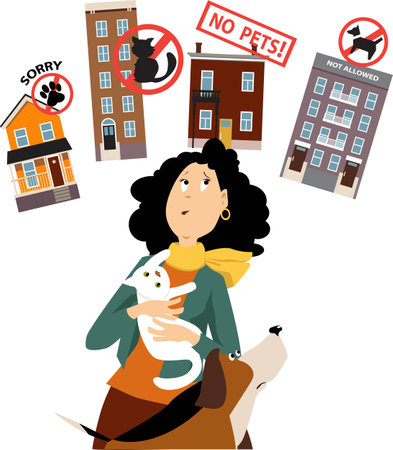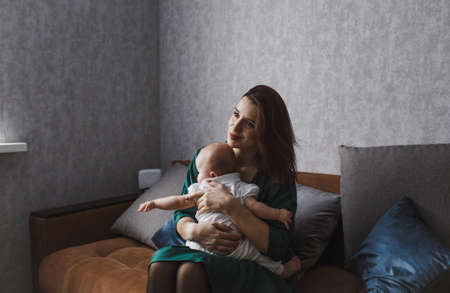1. Choose the Right Baby Monitor
Selecting the best baby monitor for your family is an important step in ensuring your babys safety and giving yourself peace of mind. There are several types of baby monitors available, each with unique features to fit different needs.
Types of Baby Monitors
Understanding the different types of baby monitors can help you make an informed decision. Below is a comparison of the main types:
| Type | Description | Best For |
|---|---|---|
| Audio Monitors | Transmit sound from the babys room so you can hear if they cry or wake up. | Parents who want a simple, budget-friendly option. |
| Video Monitors | Include a camera that lets you see and hear your baby in real-time. | Parents who want visual reassurance and added security. |
| Smart Monitors | Connect to Wi-Fi and allow remote viewing through a smartphone app, often including movement or breathing tracking. | Tech-savvy parents who want advanced monitoring features. |
Factors to Consider When Choosing a Baby Monitor
When selecting a baby monitor, consider the following factors to ensure it meets your familys needs:
Range and Connectivity
If you have a larger home, choose a monitor with a strong signal range to avoid disconnections.
Battery Life
A longer battery life ensures uninterrupted monitoring, especially during nighttime use.
Security and Privacy
If using a Wi-Fi-enabled monitor, ensure it has encryption and password protection to prevent hacking risks.
Extra Features
Some monitors include temperature sensors, two-way talk, night vision, or sleep tracking. Decide which features matter most for your baby’s safety and comfort.
By understanding the different types of baby monitors and considering key features, you can confidently choose the right monitor that best suits your family’s needs.
2. Set Up the Monitor in a Safe Location
Proper placement of your baby monitor is essential for both safety and functionality. You want to ensure you can see and hear your baby clearly without creating any hazards in the nursery. Here are some key tips to keep in mind when setting up your baby monitor:
Keep a Safe Distance from the Crib
While you want a clear view of your baby, placing the monitor too close to the crib can be dangerous. The American Academy of Pediatrics (AAP) recommends keeping all cords and electronic devices at least three feet away from the crib to reduce the risk of strangulation or entanglement.
Secure Cords and Wires
Baby monitors with power cords can pose a serious safety risk if not managed properly. Make sure all cords are securely tucked away and out of reach of your baby. Consider using cord covers or mounting options to keep everything neat and safe.
Avoid Unstable Surfaces
Your baby monitor should be placed on a sturdy surface where it won’t easily tip over or fall. If you’re using a wall-mounted camera, double-check that it’s securely fastened to prevent accidents.
Safe Placement Guidelines
| Placement Tip | Why It’s Important |
|---|---|
| Keep at least 3 feet away from the crib | Prevents strangulation hazards from cords |
| Use cord covers or secure wires | Keeps cords out of reach of curious hands |
| Avoid placing on unstable surfaces | Prevents the monitor from tipping over or falling |
| Ensure a clear view of the crib | Makes it easier to monitor your babys movements |
Consider Mounting Options
If you’re using a video monitor, mounting it on the wall or attaching it to furniture may be a safer option than placing it on a dresser or shelf. Just make sure its positioned at an angle that provides a full view of your baby’s sleeping area.
Tip:
Avoid placing the monitor directly inside the crib or on soft bedding, as this could create additional risks for your baby.

3. Ensure a Secure Connection
When using a baby monitor, security should be a top priority. Many modern baby monitors connect to Wi-Fi, which means they can be vulnerable to hacking if not properly secured. Follow these steps to ensure your baby monitor remains safe and private.
Use a Strong Password
One of the simplest yet most effective ways to protect your baby monitor is by setting a strong password for both the device and your Wi-Fi network. Avoid using default passwords or easy-to-guess combinations like “123456” or “password.” Instead, create a unique password with a mix of uppercase and lowercase letters, numbers, and special characters.
Keep Firmware Updated
Manufacturers regularly release firmware updates to fix security vulnerabilities and improve performance. Make it a habit to check for updates on your baby monitors app or website. Updating the firmware ensures that your device has the latest security patches.
Choose an Encrypted Model
Not all baby monitors offer the same level of security. When purchasing a baby monitor, look for models that use encrypted connections (such as WPA2 or WPA3 for Wi-Fi models). Encryption helps prevent unauthorized access by scrambling the data being transmitted.
Quick Security Checklist
| Security Measure | Description |
|---|---|
| Strong Password | Create a unique password with letters, numbers, and symbols. |
| Firmware Updates | Regularly check for and install manufacturer updates. |
| Encrypted Connection | Select a monitor with secure encryption to prevent hacking. |
| Disable Remote Access | If remote viewing isnt necessary, turn off this feature. |
| Secure Wi-Fi Network | Use a strong router password and enable network encryption. |
4. Monitor Your Baby Responsibly
A baby monitor is a great tool to help you keep an eye on your little one, but its important to use it wisely. While it provides peace of mind, relying too much on the monitor can lead to unnecessary anxiety or even a false sense of security. Here are some key tips to ensure youre using your baby monitor responsibly.
Use It as a Helpful Tool, Not a Replacement for Supervision
Baby monitors allow you to hear and see your baby from another room, but they should never replace direct supervision. Always check on your baby in person when needed, especially if something seems off.
Respond Promptly to Your Baby’s Needs
If you hear crying or unusual noises through the monitor, respond quickly. Trust your instincts and go check on your baby rather than waiting to see if they settle down on their own.
Balance Monitoring with In-Person Checks
While a monitor helps you stay aware of your babys activity, physically checking on them is just as important. Try to strike a balance between using the monitor and visiting their room at appropriate times.
How to Use Your Baby Monitor Responsibly
| Do | Dont |
|---|---|
| Use the monitor as a backup, not the only way to check on your baby. | Rely entirely on the monitor without ever checking in person. |
| Adjust volume settings so you can hear alerts clearly but not obsessively. | Keep the volume too high, leading to unnecessary stress over minor noises. |
| Place the monitor at a safe distance with a good view of the crib. | Position the monitor too close to the crib, creating safety hazards. |
| Turn off video or sound when not needed to reduce unnecessary worry. | Constantly watch or listen to every small movement, causing anxiety. |
Avoid Over-Monitoring
It’s easy to become overly dependent on a baby monitor, especially for first-time parents. However, constantly watching or listening can make it harder for you to relax and trust your parenting instincts. Allow yourself breaks and remember that not every sound requires immediate attention.
Create Healthy Monitoring Habits
Your goal is to use the baby monitor as a supportive tool rather than something that increases stress. Set clear boundaries for when and how you’ll use it so that you’re present for your baby while also giving yourself peace of mind.
By using your baby monitor responsibly, you can ensure that it enhances your ability to care for your little one without becoming an unnecessary source of worry.
5. Practice Proper Maintenance and Safety Checks
Keeping your baby monitor in good working condition is essential for ensuring your little one’s safety. Regular maintenance and safety checks help prevent malfunctions and ensure that the monitor continues to function properly when you need it most.
Regularly Inspect for Wear and Tear
Over time, baby monitors can experience wear and tear, especially with frequent use. Check the device for any visible damage, such as frayed cords, loose connections, or cracked screens. If you notice any issues, stop using the monitor until it is repaired or replaced.
Test Functionality Frequently
To make sure your baby monitor is working correctly, test its functionality regularly. Here are a few things to check:
| Component | What to Check |
|---|---|
| Audio & Video Quality | Ensure clear sound and picture with no static or lag. |
| Battery Life | Check if the battery holds a charge and replace if needed. |
| Signal Strength | Verify that the monitor has a strong connection throughout your home. |
| Alerts & Notifications | Test motion and sound alerts to confirm they work properly. |
Stay Updated on Recalls and Safety Notices
B aby monitor manufacturers may issue recalls or safety updates due to potential hazards. Register your device with the manufacturer so you receive notifications about any important updates. You can also check the Consumer Product Safety Commission (CPSC) website periodically for recall information.
Keep Cords and Wires Secure
If your baby monitor has power cords, make sure they are placed out of reach of your child to prevent strangulation risks. Use cord covers or mount the monitor safely away from the crib to reduce any potential dangers.
Clean Your Monitor Regularly
Dirt and dust can accumulate on your baby monitor over time, potentially affecting its performance. Wipe down the screen, camera lens, and speaker with a soft cloth to keep everything functioning optimally.
The Importance of Routine Maintenance
A well-maintained baby monitor gives you peace of mind by ensuring that you’re always connected to your little one. By performing regular safety checks and staying informed about recalls or updates, you can create a safer environment for your baby while using this essential parenting tool.


